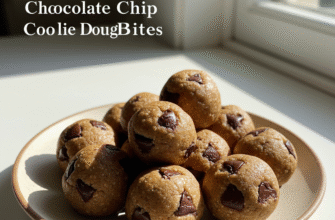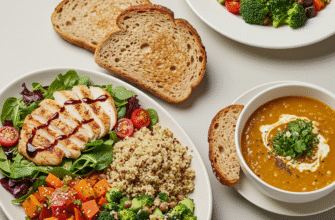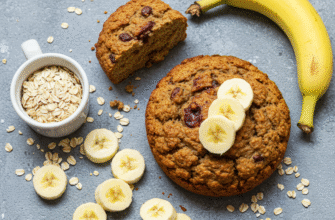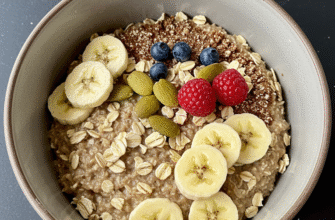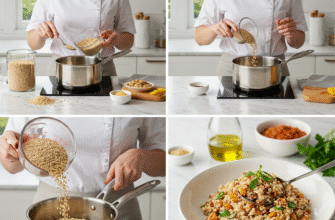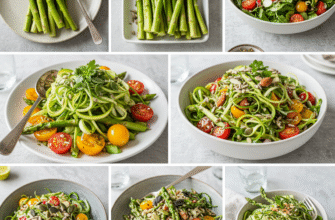Let’s be honest, the phrase “healthy eating” sometimes conjures images of bland steamed vegetables and unseasoned chicken breasts. It sounds worthy, yes, but perhaps a little… dull? The good news is, this perception is far from the truth. Eating nutritious food doesn’t mean sacrificing flavour or feeling like you’re missing out. Quite the opposite! With a few simple strategies and a shift in perspective, you can transform everyday healthy ingredients into meals that feel genuinely luxurious, satisfying, and exciting.
Forget expensive, complicated recipes or obscure ingredients. The real secret lies in understanding how to coax the maximum flavour out of simple, wholesome foods. It’s about technique, smart seasoning, and paying attention to the details that elevate a dish from basic fuel to a delightful experience. Ready to make your healthy meals taste incredible?
Start with the Stars: Quality Ingredients
This might sound obvious, but its importance cannot be overstated. You simply cannot create a luxurious taste experience from subpar ingredients. Think about it: a sun-ripened tomato bursting with sweetness versus a pale, watery one picked too early. There’s no comparison.
Focus on Freshness: Whenever possible, opt for fresh, seasonal produce. Farmers’ markets are fantastic resources, but even your local supermarket prioritizes seasonal items. These ingredients are typically at their peak flavour and nutritional value. Frozen fruits and vegetables are excellent alternatives, especially when items are out of season, as they are often frozen quickly after harvest, locking in nutrients and taste.
Don’t Skimp on Basics: Invest in good quality olive oil, vinegars, salts, and spices. A robust, fruity extra virgin olive oil can elevate a simple salad dressing or finish roasted vegetables beautifully. A flaky sea salt provides a different textural experience and flavour profile than standard table salt.
Using fresh, high-quality ingredients is consistently cited by chefs as the number one factor in creating delicious food. Seasonal produce, for example, is often harvested at its peak ripeness, leading to naturally better flavor and texture. This forms the essential canvas upon which other flavor-enhancing techniques can truly shine. Investing in good basics makes a world of difference.
Mastering the Art of Flavor Building
Luxurious taste often comes down to a balance and depth of flavour. Healthy food can sometimes taste flat if it’s missing key components. Think beyond just salt and pepper.
Embrace Acidity
Acid is your secret weapon for brightening flavours and cutting through richness. It wakes up the palate and makes everything taste more vibrant. A squeeze of lemon or lime juice just before serving can transform roasted vegetables, grilled fish, soups, or grain bowls. Vinegars – balsamic, red wine, apple cider, sherry – add complexity to dressings and marinades. Even a dollop of plain yogurt or sour cream can add a necessary acidic tang.
Salt Strategically
Salt doesn’t just make food salty; it enhances existing flavours. However, *when* and *how* you salt matters. Salting vegetables before roasting helps draw out moisture, leading to better caramelization. Salting pasta water ensures the pasta itself is seasoned from within. Using different types of salt can also add nuance. Try flaky sea salt (like Maldon) as a finishing salt for texture and bursts of flavour, and kosher salt for general cooking.
Incorporate Healthy Fats
Fat carries flavour and contributes to a satisfying mouthfeel, making food feel richer and more luxurious. Healthy fats are essential! Drizzle extra virgin olive oil over finished dishes. Add avocado slices to salads or toast. Incorporate nuts and seeds for crunch and richness in salads, oatmeal, or yogurt. Use tahini (sesame paste) in dressings or sauces.
Unlock Umami
Umami is often described as the fifth taste – savory, deep, and complex. Many healthy ingredients are naturally rich in umami. Think mushrooms (especially shiitake or cremini), ripe tomatoes (particularly roasted or sun-dried), seaweed, nutritional yeast (great for a cheesy flavour in vegan dishes), soy sauce or tamari (use sparingly due to sodium), and fermented foods like miso.
Harness the Power of Herbs and Spices
This is where you can truly get creative and add layers of aromatic complexity without adding unhealthy fats or excessive salt.
Fresh vs. Dried: Fresh herbs like parsley, cilantro, basil, mint, dill, and chives add brightness and are often best added towards the end of cooking or as a garnish. Dried herbs are more concentrated and benefit from being added earlier in the cooking process to allow their flavours to meld. Think oregano in tomato sauce or rosemary with roasted potatoes.
Toast Your Spices: Gently toasting whole spices (like cumin seeds, coriander seeds, peppercorns) in a dry pan before grinding them releases their volatile oils and intensifies their aroma and flavour dramatically. It’s a small step that makes a huge difference.
Go Beyond Basics: Experiment with spices like smoked paprika (adds smokiness without grilling), turmeric (earthy and vibrant), cumin (warm and earthy), coriander (citrusy and warm), ginger (fresh and zesty), and chili flakes (for heat). Don’t be afraid to combine them.
Leverage Cooking Techniques
How you cook your food dramatically impacts its final taste and texture. Moving beyond simple boiling or steaming opens up a world of flavour.
Roasting Rules
Roasting vegetables (like broccoli, cauliflower, Brussels sprouts, carrots, sweet potatoes) at a relatively high heat (around 400°F or 200°C) works wonders. The dry heat encourages caramelization, bringing out their natural sweetness and creating delicious crispy edges. Toss vegetables with a little olive oil, salt, pepper, and maybe some garlic powder or herbs before roasting.
The Sizzle of Searing
Achieving a good sear on lean proteins (chicken breast, fish fillets, tofu, tempeh) or even hearty vegetables like cauliflower steaks creates a flavourful crust through the Maillard reaction. Use a hot pan with a small amount of high-heat oil. Don’t overcrowd the pan, and resist the urge to move the food around too much initially – let that crust develop!
Perfecting Texture
Luxurious food often involves contrasting textures. Think creamy soup with crunchy croutons, or smooth yogurt with crisp granola. Add textural elements to your healthy meals:
- Crunch: Toasted nuts (almonds, walnuts, pecans), seeds (pumpkin, sunflower), roasted chickpeas, whole-grain croutons, crispy onions or shallots (baked, not deep-fried).
- Creaminess: Avocado, hummus, pureed white beans or cauliflower added to soups, a dollop of Greek yogurt or cashew cream, tahini dressings.
- Chew: Hearty whole grains like farro or barley, chewy dried fruit (in moderation), grilled halloumi (if dairy is okay for you).
Presentation Elevates Perception
We eat with our eyes first! Taking an extra minute to plate your food attractively can significantly enhance the perceived luxury and enjoyment of the meal. You don’t need to be a professional food stylist.
Simple Garnishes: A sprinkle of fresh herbs (chopped parsley, cilantro, chives), a drizzle of quality olive oil or balsamic glaze, a few toasted sesame seeds, a lemon wedge, or a pinch of flaky sea salt can make a dish look instantly more appealing.
Think About Color: Try to incorporate different colours onto your plate naturally through various vegetables and fruits. A vibrant plate is naturally more enticing.
Neatness Counts: Arrange components thoughtfully rather than just piling them on. Wipe the rim of the bowl or plate if needed. Use nice serving dishes when you can – it adds to the feeling of occasion.
Sauces and Dressings: The Healthy Finish
A great sauce or dressing can tie a meal together. You don’t need heavy cream or butter-laden options.
Vinaigrettes: Master a basic vinaigrette ratio (typically 3 parts oil to 1 part acid like vinegar or lemon juice). Whisk in Dijon mustard for emulsification, add a pinch of salt, pepper, and maybe some minced garlic or shallot, or a touch of maple syrup for balance.
Yogurt-Based Sauces: Plain Greek yogurt makes a fantastic base for creamy sauces. Mix it with lemon juice, garlic, dill, or cucumber for a tzatziki-style sauce. Blend it with herbs for a green goddess dressing.
Vegetable Purees: Pureed roasted red peppers, steamed cauliflower, or butternut squash can form the base of surprisingly creamy and flavorful sauces for pasta or proteins.
Making healthy food taste luxurious isn’t about complicated recipes or expensive gadgets. It’s about respecting your ingredients, understanding the fundamentals of flavour building, employing smart cooking techniques, and paying attention to details like texture and presentation. By incorporating these simple tips, you can transform your everyday nutritious meals into something truly special, proving that healthy eating can be both incredibly delicious and deeply satisfying. Start experimenting, trust your palate, and enjoy the journey to more flavourful, vibrant, and enjoyable healthy eating!


